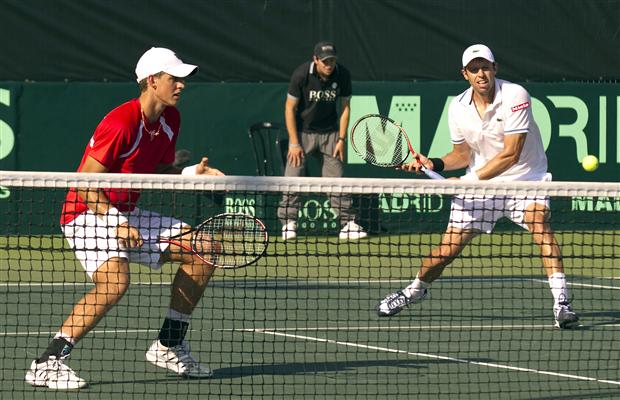Doubles Formations – Double Up
By Kyle Mollison, USPTA
A corollary to the Double Back formation is the Double Up format, and as one might expect it is almost the exact opposite of it.
Set Up
Again the set up is quite simple: while players will start in the 1 Up 1 Back formation, immediately after the serve or return the deep player will approach the net and look to hit volleys and overheads.
Benefits
The biggest benefit of the double up formation is that it has the single highest offensive potential of any formation. Both players can more easily hit winners with angle volleys, drop volleys, driven volleys, and overhead smashes. Because of this position it is easy for teams who utilize the double up formation to “force their will” on other teams and push them around the court.
Another benefit, going along with higher offensive potential, is that it eliminates the gap that is a huge weakness in the 1 up 1 back formation. By bringing both players up to the net, there is no easily exploitable geometric weakness.
Drawbacks
The biggest drawback is the susceptibility to the lob. As I’ve mentioned before one of the only shot that is truly indefensible is a well executed lob. With both players at the net a well executed lob can bring 1 (or if you’re smart, both) of you back off the net, creating an exploitable mis-match while you run down the lob.
Going along with that the secondary draw back of playing double back is that there could be a need for backwards movement. For that reason, court coverage is a bit more challenging that double back or 1 up 1 back.
When To Use
If the double back formation was the protect defense, that double up is a blitz. I am a BIG proponent of the double up formation in doubles. It gives you a high offensive potential and lets you take the outcome of the match into your own hands. But, you should really use the double up formation one or both players are reasonably mobile and can volley.
Tune in next week for a study on some more advanced and less well known doubles formations.

